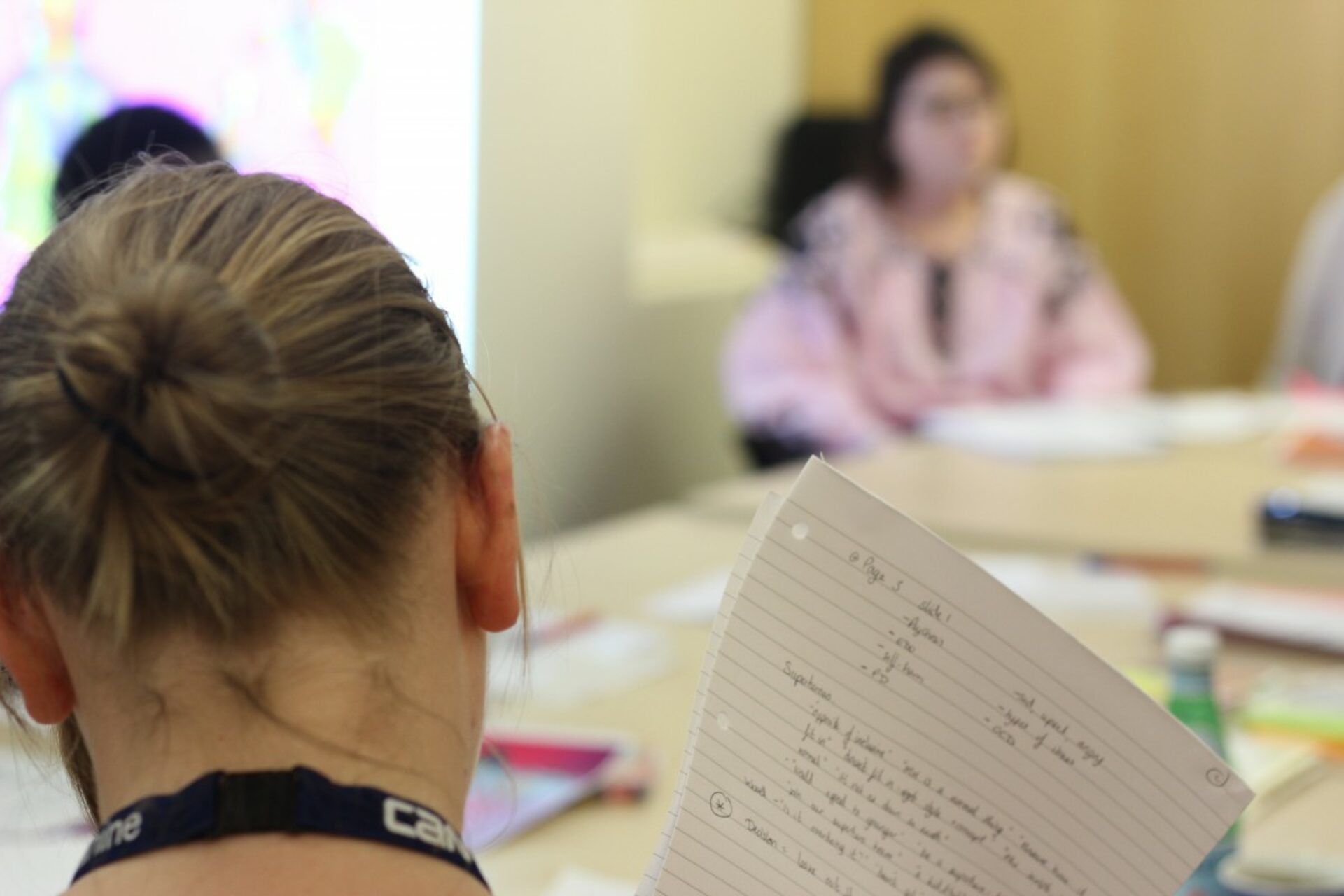A staff nurse and researcher shares her first experience of working with a Young Person’s Advisory Group.
Miriam Avery
As a child and adolescent mental health nurse, making sure that children and young people’s opinions are listened to is something that is really important to me.
I recently attended some workshops about patient and public involvement in research (PPI), where I learnt about young persons’ advisory groups (or YPAGs, for short).
These are groups of young people (unsurprisingly) that can help shape ideas, give feedback, set research priorities or get involved in conducting research itself. As a newbie researcher, the idea of working with a YPAG appealed to me and I decided to find out more.
I had heard of the McPin Foundation through their recent research priority-setting project ‘Right People, Right Questions’, and so knew that they were dedicated to involving young people in research in a meaningful way and that they coordinated a YPAG.
I emailed to introduce myself and to see if they would be interested in giving some feedback on my research proposal.
Often young people have a difficult time accessing the right treatment for these kinds of symptoms and have negative experiences of healthcare services. My aim was to design some research which could help improve matters.
Poorly understood symptoms
My proposal was in the very early stages – a vague outline of a qualitative research project which would investigate young people’s experiences of healthcare services for medically unexplained symptoms (MUS).
MUS is an umbrella term for any poorly understood physical symptoms, from recurrent headaches to myalgic encephalomyelitis/chronic fatigue syndrome (ME/CFS), irritable bowel syndrome (IBS), fibromyalgia and somatic symptom disorder.
Often young people have a difficult time accessing the right treatment for these kinds of symptoms and have negative experiences of healthcare services. My aim was to design some research which could help improve matters.
Luckily for me, the group’s facilitator replied to say that she thought the YPAG would be interested in my project and we began thinking together about what would be important to ask the YPAG and how best to ask it.
On the day of the meeting, I travelled down to London feeling very nervous about presenting my work. Everyone made me feel very welcome and there was time for a bit of a chat and lunch before I was due to speak.
After I presented my project and explained important terms and concepts, there were immediately lots of questions and suggestions from the group who were clearly very knowledgeable about both mental and physical health as well as research methods. Many of the group had taken part in and been involved with research before.
As a result of the group’s suggestions, my research question is much more focused and precise. I also now have a lot of ideas for methods to make the research accessible to younger people, for example, story-telling!
Proposal under the microscope
Next the group split into three and I asked them to each focus on a different aspect of the project. Firstly, what did they think of the research question? Did it make sense? Was this an issue important for young people?
Secondly, what did they think of the proposed methods? What kinds of approaches did they think would be suitable for younger or older participants? And thirdly, how did they think I could best involve young people throughout the project itself?
The groups had so much to say, it was difficult to keep up at times! But luckily there was someone taking notes which I could refer to after.
The experience really helped me consider my ideas (and the way I had presented them) from a totally different perspective.
As a result of the group’s suggestions, my research question is much more focused and precise. I also now have a lot of ideas for methods to make the research accessible to younger people, for example, story-telling!
Rather than have this be a one-off experience, I have decided to work with a YPAG throughout the project, to give feedback and help develop any materials, such as interview questions.
Practical considerations
There were some suggestions that I couldn’t take on for practical reasons. For example, I particularly loved a suggestion that young people could be trained to conduct interviews, but after careful consideration I realised that this would only be possible with much more funding than I will have access to.
However, this is now something I will keep in mind for future research. What’s more, rather than have this be a one-off experience, I have decided to work with a YPAG throughout the project, to give feedback and help develop any materials, such as interview questions.
These are just a few of the ways that my project idea has developed and been improved as a result of my meeting with the YPAG. Overall, it was a really positive experience. I feel like I learnt a lot from the group and now feel more confident to work with a YPAG in the future.
Miriam Avery is a staff nurse and researcher at the Royal Manchester Children’s Hospital. You can read more about medically unexplained symptoms here.
